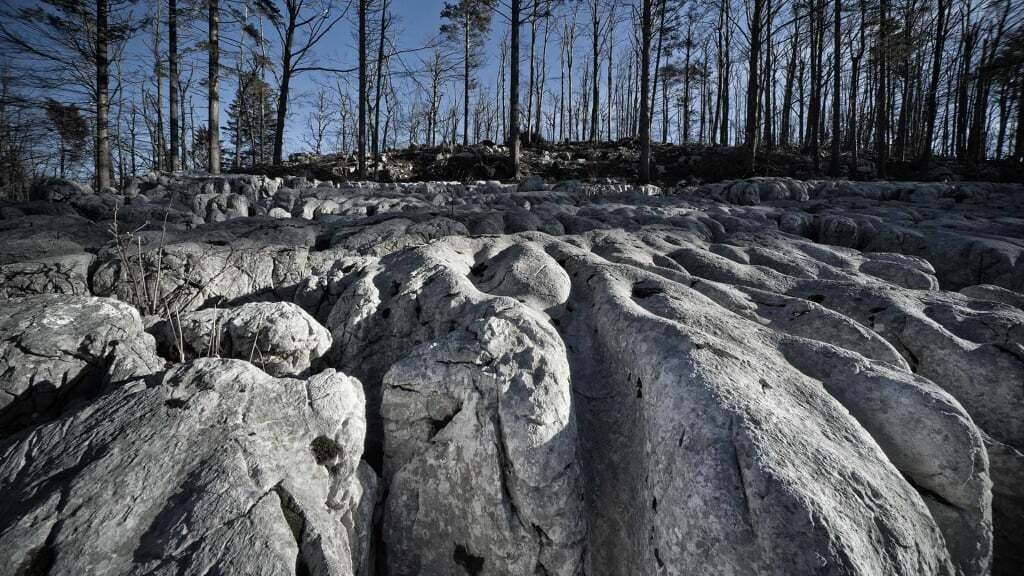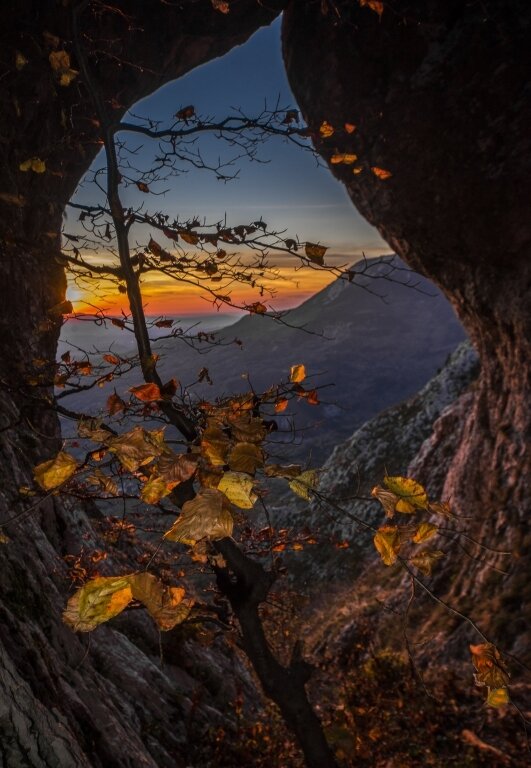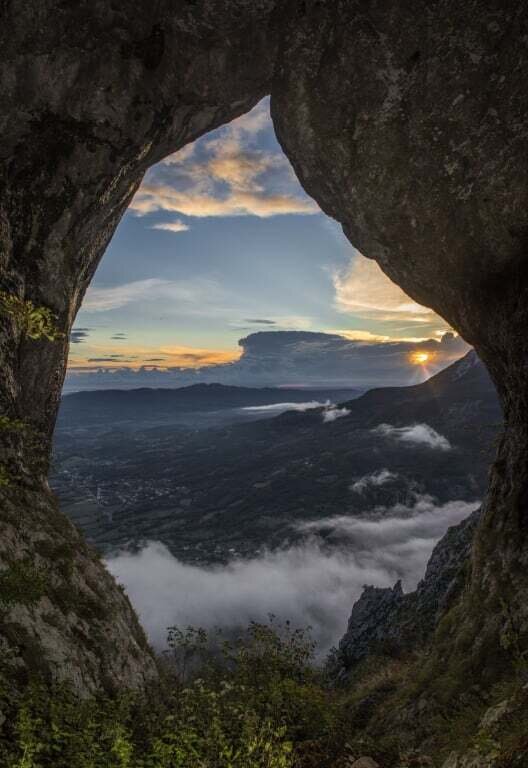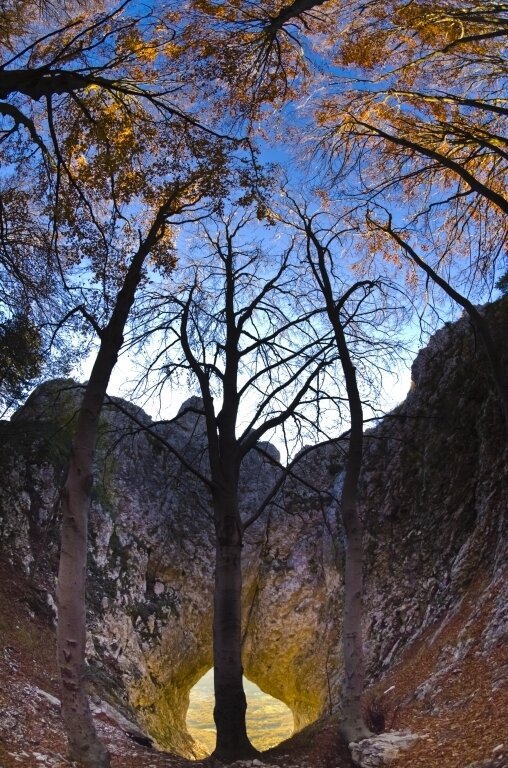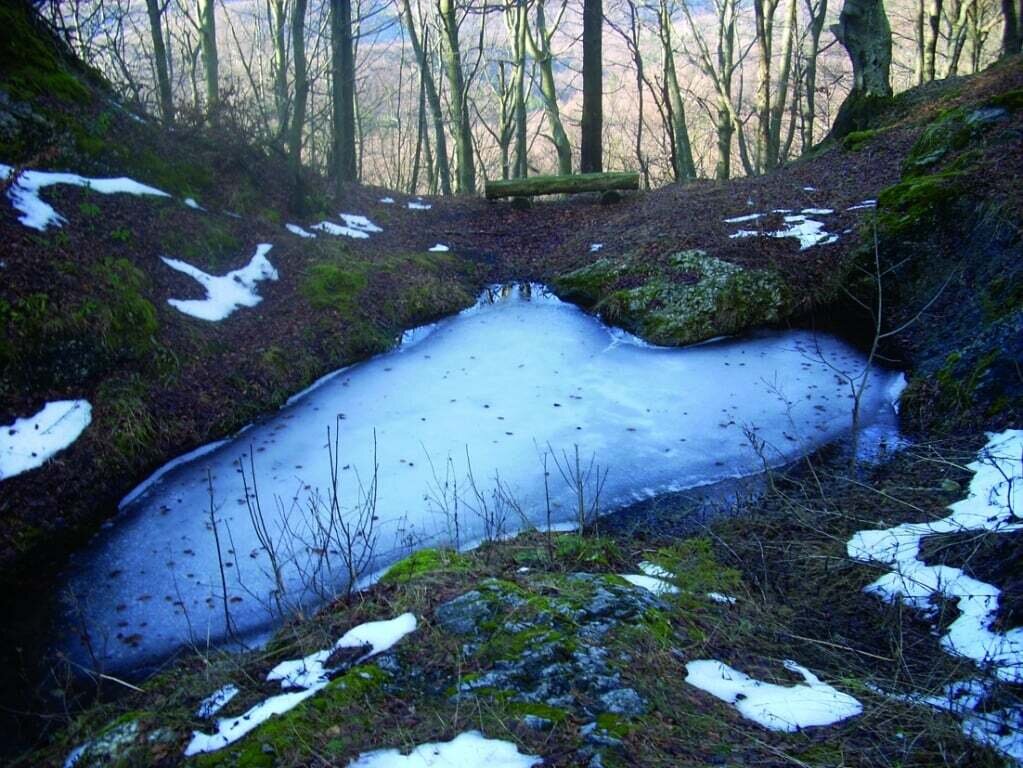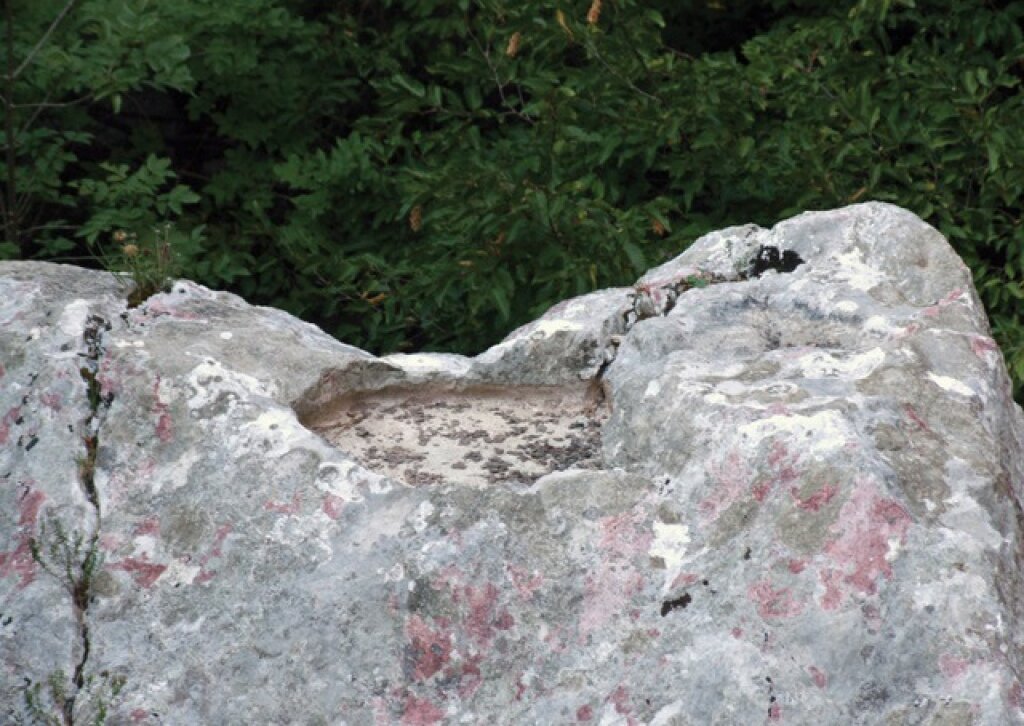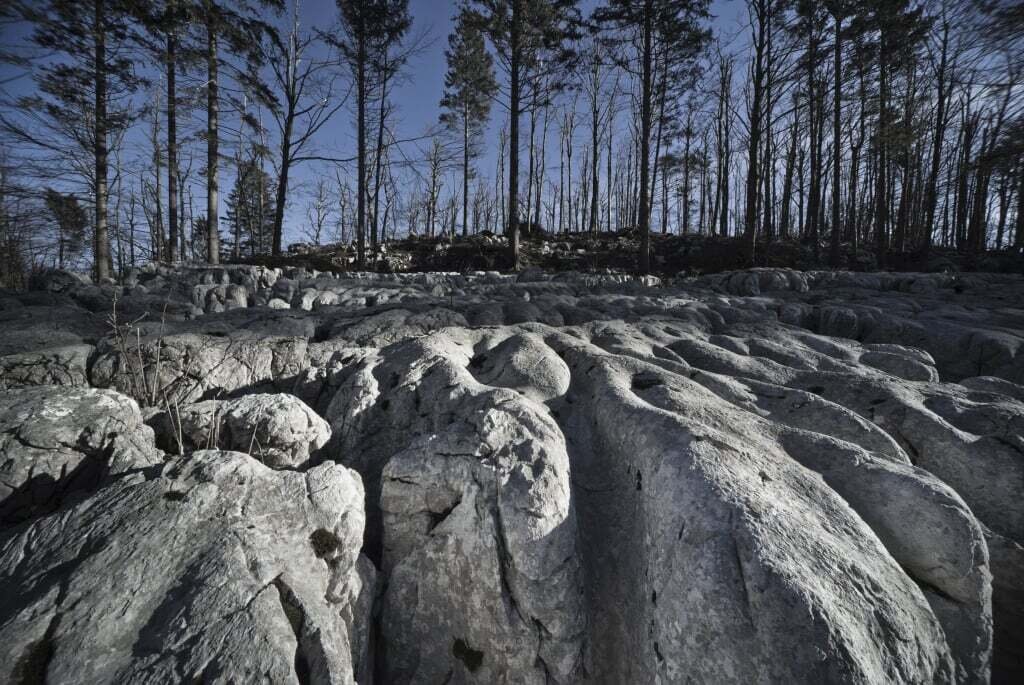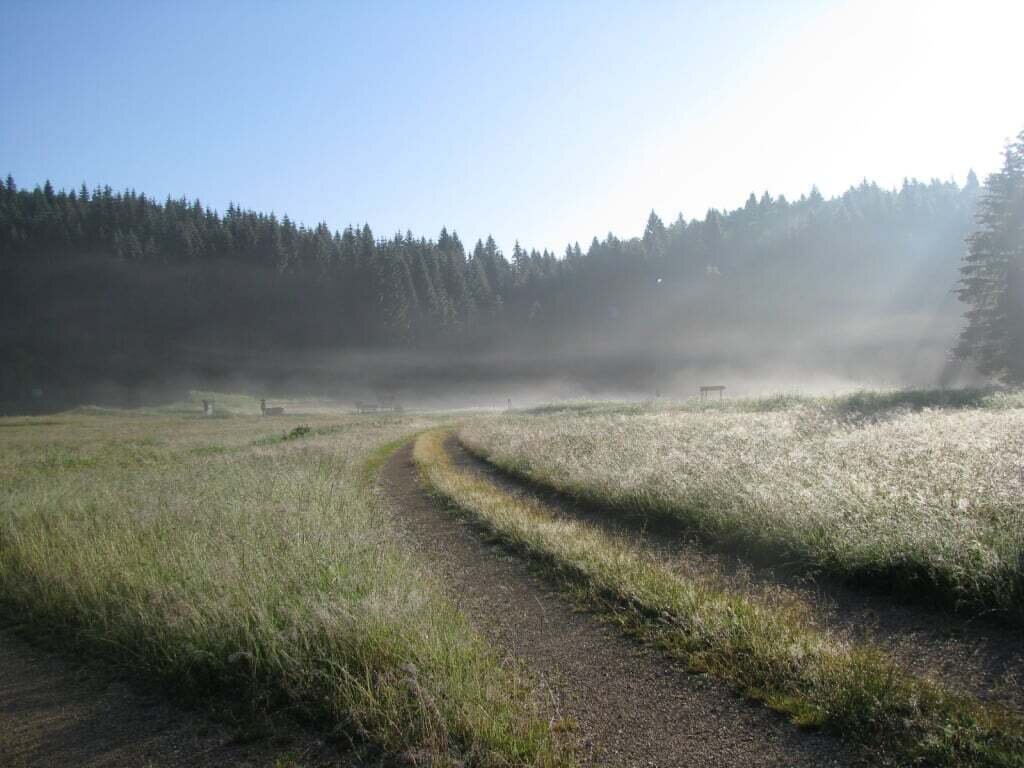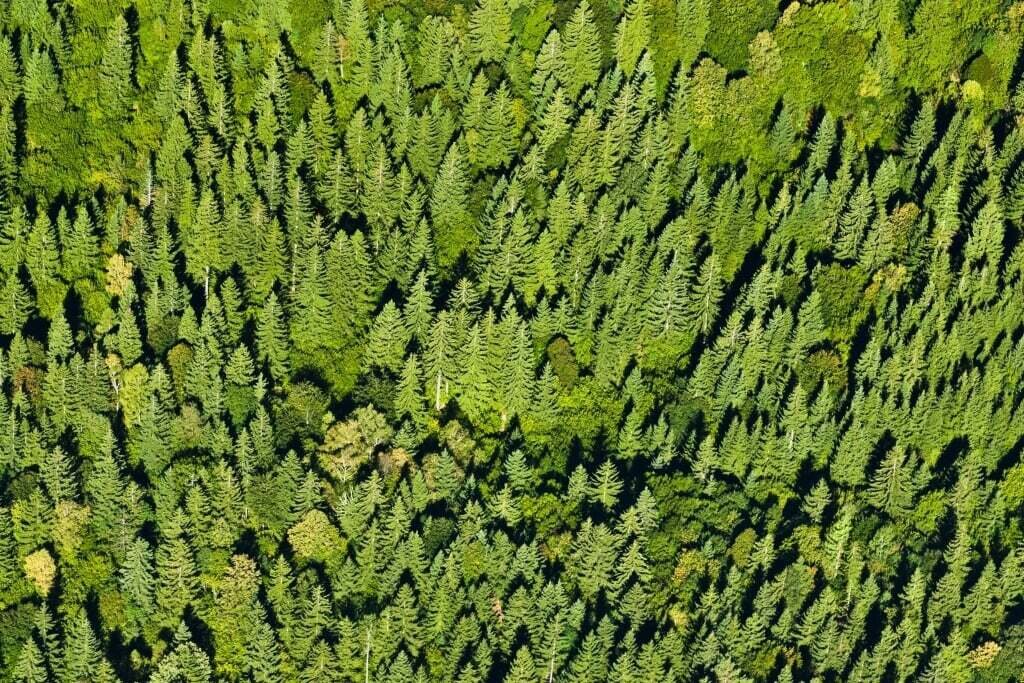The Karst World
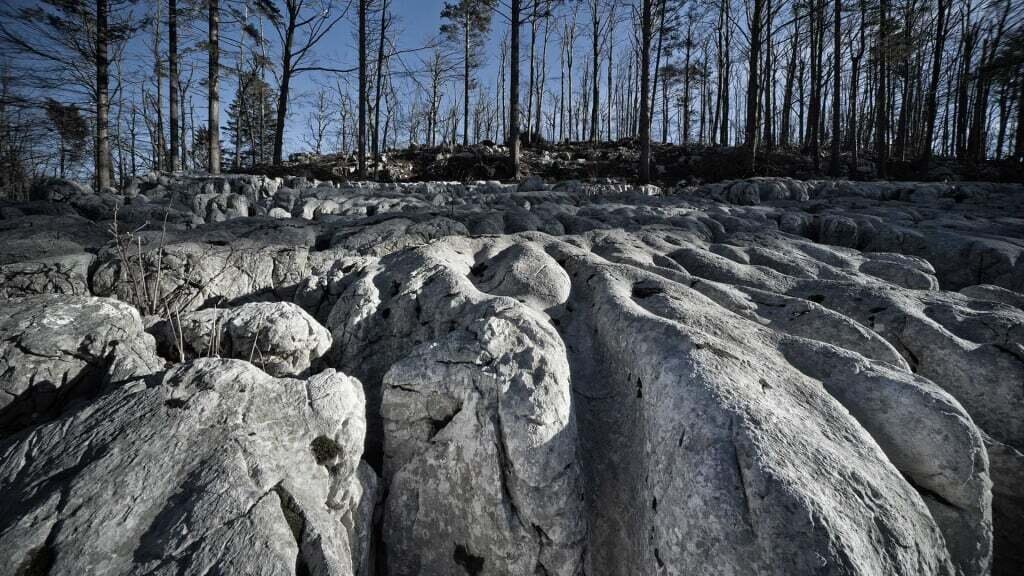
From prehistoric origins, the history of the karstic world has always fascinated with natural peculiarities, rocks of the most unusual shapes and real fossils, all formed in the primordial sea.
Nature’s Most Magnificent CreationsStanding tall over the green Vipava Valley are the Trnovo Forest Plateau and Nanos Plateau, two karst elevations that charm visitors with the abundance of karst phenomena. Every step you take, be it on the vast meadows or deep in the woods, amazes with a new peculiar feature, unusually shaped rock or even fossils if you are lucky.
The story of karst in this area starts around 100 million years ago (or 220 million years ago according to other sources) in the Mesozoic Era when the rocks, limestones and dolomites were being created in the primordial sea. A large part of the rocks in the Trnovo Forest Plateau originates from the massive coral reef that stretched the area that is today the Soča Valley up to Montengero. These rocks therefore display a large number of fossil remains of shells, snails, corals and other sea life. The sea was drained dry and the geologic shifts crafted the hills and valleys we see today. The surfaces overlain with limestone were karstified. Slowly but persistently the limestones have been dissolved by rain water and nature has been crafting its masterpieces: extraordinary karst phenomena out in the open or hidden in the depths of Earth.
The Trnovo Forest Plateau and the Nanos Plateau were bestowed with remarkable creations – karst features that constitute valuable natural heritage.
The Otlica WindowThe eye-catching natural orifice in the proximity of the village of Otlica is a landmark that was created during an intense tectonic fault. The natural bridge emerged as a result of geologic shifts and gradually gained today’s appearance through millions of years of undergoing typical karstification processes – disintegration and dissolving of the rocks. Set at the edge of the Trnovo Plateau, it attracts nature lovers, hikers and walkers. An easy walking trail was set up from the village of Otlica to the Otlica Window, while hikers can choose other trails with varying degrees of difficulty to reach this remarkable sight.
The giant solution pan on Križna goraOval-shaped hollows carved into the rock are called solution pans ("škavnice"). They emerge as the standing water erodes the rock, and can reach from a few centimetres to around one metre in length. The hill of Križna Gora uphill from Ajdovščina boasts a giant solution pan (Orjaška škavnica) which stretches over ten metres in length and around five metres in width.
Karren under the summit of Sinji vrhAnother typical karst phenomenon are channels, which are basically elongated hollows carved out by water travelling over bedrock. Large-scale hollows are called karren. Extraordinarily well-developed and deep karren – and smaller channels – can be admired off the main road between Col and Predmeja, specifically on the stretch of road between the village of Gozd and Kovk bellow the hill of Sinji vrh.
Frost hollows created in karst hollowsIn the geologic past, karst plateaus saw the emergence of a myriad of depressions of various shapes and sizes. Among the bigger ones on the Trnovo Forest Plateau are: Mala and Velika Lazna, Avška Lazna, Krnica and Smrečje (lazna being the local term for this particular type of hollow). The deeper depressions with steeper slopes – called draga – are the result of glacial activity. Typical examples of such depressions are: Mrzla draga, Mojska, Smrekova and Črna draga. Their depth and specific shape are why cold air lingers at the bottom, causing a temperature and vegetation inversion that ultimately creates the peculiar phenomenon of frost hollows. The biggest and most well-known frost hollow is Smrekova draga.
Shafts and ice cavesWater percolating through permeable rocks is responsible for creating a bizarre yet fascinating underground karst landscape. As such, the Trnovo Forest and Nanos are punctured with shafts, some running very deep. The deepest shaft, discovered next to the village of Predmeja, goes 884 metres deep. A highly rare phenomenon in this part of Europe is the ice cave with layers of perpetual ice. The Big Ice Cave at Paradana is the most famous of the lot; in the days of yore, large blocks of ice were harvested from it to be sold. The cave can only be accessed up to its entrance and is also noteworthy for its prominent vegetation inversion around the entrance on account of the enduring cold emanating from the cave.
